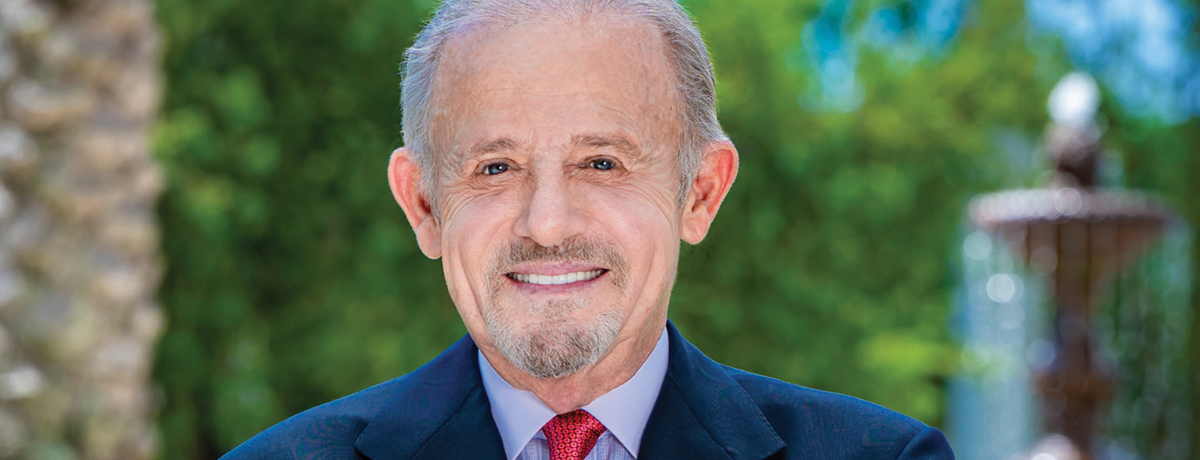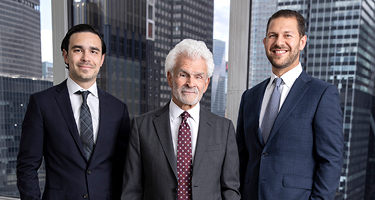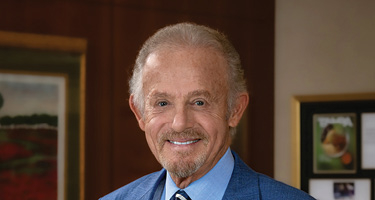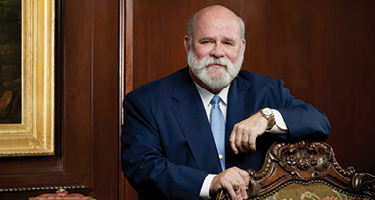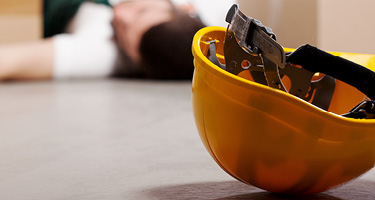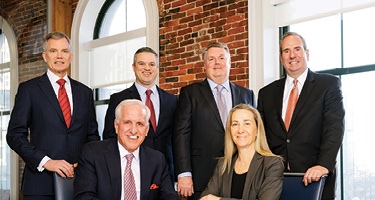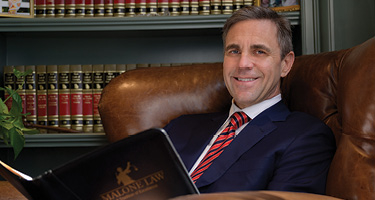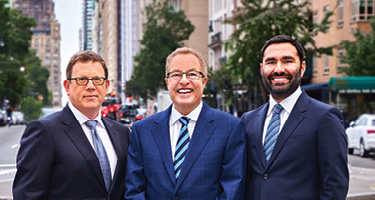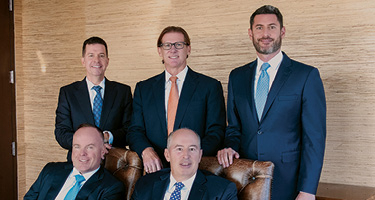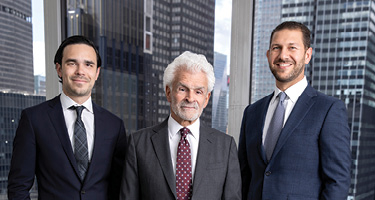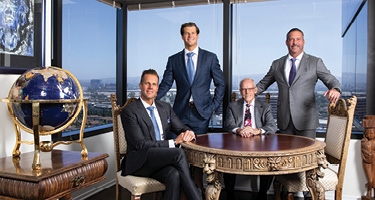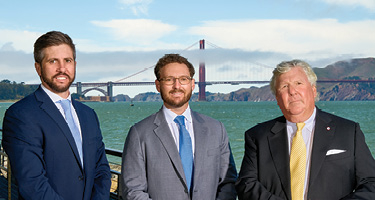STEVE YERRID KNOWS WHAT IT MEANS TO BE TRIAL-TESTED. Even prior to passing the bar, he clerked part-time in a prestigious D.C. law firm and worked in the U.S. Senate to pay his tuition to Georgetown University Law School. Over the past four decades, he has built his stellar reputation and that of The Yerrid Law Firm by convincing juries to side with his clients in catastrophic injury and wrongful death cases, particularly those poised to provide for meaningful societal impact and protect the welfare of others. In the process, he has obtained a number of significant results both in Florida and in other parts of the nation.
Beating the Unbeaten
One of Yerrid’s career-defining cases occurred in Palm Beach. In the 1990s, Yerrid was selected by the late Gov. Lawton Chiles as the youngest member of the 11-member “Dream Team” of Florida’s best private lawyers. He took a leading role in the state of Florida’s landmark lawsuit against the previously unbeaten cigarette industry.
Yerrid was tasked with amending Florida’s case against Big Tobacco to include an action under the Racketeer Influenced and Corrupt Organizations (RICO) Act. The case was filed in Palm Beach County. The RICO Act makes it unlawful activity to conspire and subsequently engage in or receive income from an enterprise through a pattern of “racketeering” activity. Yerrid eagerly accepted the RICO aspects of the case because of his prior experience and extensive knowledge of that specialized area of the law and its usage in the courtroom; in the late 1970s, he had been in a three-month racketeering trial, the longest of its kind in U.S. history.
“The tobacco executives were hiding behind the cigarette cartel’s wrongful conduct, false marketing and youth pandering by blaming the old regime of executives in the 1950s and 60s who were deceased. But when we added RICO to our case, the current CEOs couldn’t run from the spotlight or place blame elsewhere once the judge allowed the amendment, and validated our assertion that the RICO enterprise was ongoing and continuous up to the present day.” Yerrid recalls. “When we asserted the current tobacco executives were continuing to be engaged in an ongoing racketeering conspiratorial enterprise and labeled those tobacco executives as racketeers, our case was brought home in a very personal and present-day manner. With that stigma, I would like to think this public perception played a role in bringing Big Tobacco to the settlement table for the first time in its history. The trial commenced in a packed Palm Beach courtroom before Judge Harold Cohen, of Florida’s 15th Judicial Circuit and it was being covered by nationwide media. The cigarette industry settled the case during the third week of jury selection.”
It was the biggest monetary settlement in U.S. history at the time, ultimately topping $17 billion. Subsequent to that favorable result, a $200 billion national, multistate settlement shortly followed, and that multistate resolution was largely accomplished through the use of much of Florida’s work product and its litigation tactics. “Because of what we were able to achieve in the tobacco litigation, a societal sea change occurred throughout the nation,” Yerrid notes. As a result, “millions of lives have been, and continue to be, saved.”
Throughout its existence, Yerrid and his firm have recovered billions of dollars in high-stakes litigation against a number of well-funded and powerful defendants. Yerrid and the firm have secured more than 300 individual recoveries in excess of $1 million and several in the eight- to nine-figure range in the areas of catastrophic injury, product liability, construction defects, medical negligence, premises liability as well as trucking and motor vehicle accidents and a variety of other types of civil litigation.
Down To The Bone
Yerrid has fought for countless plaintiffs through the decades. There have been many highlights and milestones, but when considering those verdicts he has obtained in South Florida, he fondly recalls one of the cases he had as a young lawyer—the first medical malpractice case he tried in Broward County.
In the early 1980s, he represented Nathan Satter, a recognizable actor from the Ft. Lauderdale area who was in his 70s at the time. One morning during breakfast, Satter suddenly dropped his fork and partially lost movement in his arm. Assuming he had suffered a stroke, Satter was rushed to the hospital for treatment. A radiology study revealed a shocking surprise. Months earlier, a small cancerous section of Satter’s mandible had been resected and a Kirschner wire (“K wire”) had been inserted to retain the space in the jawbone that had been removed. Once he healed, a plastic implant would be put into place and the mandible restored to its prior condition. But the K wire, which was several inches long, had not been properly secured. As a result of talking and chewing food over several weeks, the wire loosened and traveled through his jawbone and into his skull where it was driven deep into his brain.
“The X-ray taken of his head at the hospital is a simple black-and-white image, yet it remains one of the most startling radiological pictures I have ever seen,” Yerrid says.
Typically, a jury answers a standard first question on a medical malpractice verdict form: “Was there negligence on the part of the doctor to cause this injury?” Before the jury retired to deliberate, Yerrid asked the seasoned (and very egotistical) defense lawyer about the second question on the verdict form. With a condescending look of disdain, the seasoned lawyertold Yerrid he had never gone to a second question because he always got a “no” on the first…meaning he had never lost.
Shortly after the jury began deliberating, there was a question sent to the judge by the jurors—they asked for a calculator. “I couldn’t stop myself from walking over to the defense table,” Yerrid recalls. “Looking straight at my supposedly unbeaten adversary, I remarked, ‘Looks like you’re going beyond the first question today. I still remember the expression on his face.'”
Deliberations took only a short time longer before the jury reached its verdict answering yes to the first question finding the defendant was negligent in his care and treatment of Satter and rendered a very substantial verdict. “I certainly have secured a number of larger verdicts,” Yerrid says, “but that one was especially satisfying.”
“Because of the defense lawyer’s arrogance and even more so because I still believe asking for a calculator, in my opinion, is the best question a jury can ask. Looking back at a fairly long career, I am confident there have been tremendous improvements in our society and many of those changes occurred because of what trial lawyers have done in courtrooms across the nation. If I could come back and have another chance at life, I would want it to be that of a trial lawyer.”
* “Lawyer of the Year” in The Best Lawyers in America® for medical malpractice law – plaintiffs in 2012 and 2015 and personal injury litigation – plaintiffs in 2014 in Tampa.
If you need experienced legal representation, use the Best Lawyers Find a Lawyer tool to connect with attorneys ready to guide you through your case.
